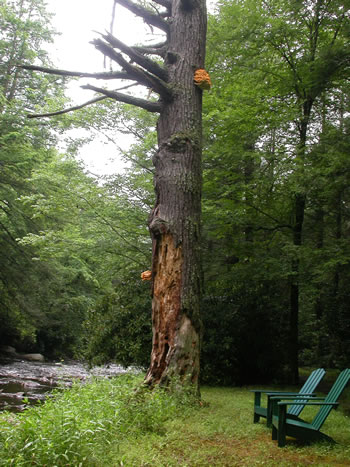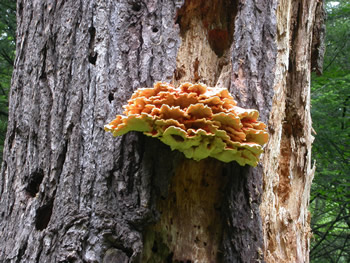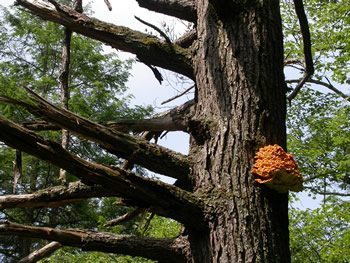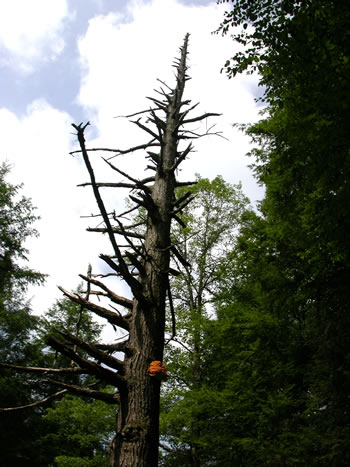Laetiporus huroniensis
Scientific name: Laetiporus huroniensis Burds. & Banik
Derivation of name: Laet- means "pleasing" or "bright"
or "abundant" and por- means "pores." Huron refers to
the Huron Mountains
in Michigan's Upper Peninsula
where the species is commonly
found. Ensis indicates
"place of origin."
Synonyms:
Common name(s):
Phylum: Basidiomycota
Order: Polyporales
Family: Fomitopsidaceae
Occurrence on wood substrate: Parasitic and saprobic;
solitary or more commonly shelving and forming compound
clusters on mature and old growth conifers, especially
hemlock
(Tsuga canadensis); May through November.
Dimensions: Individual caps up to 25 cm wide, shelving and
clustering to form much larger groupings.
Upper surface: Bright orange. This species is described as
morphogically indistinguishable from L. sulphureus.
Pore surface: Lemon-yellow; pores 2-4 per mm.
Edibility: Caution is advised. See Cornell Mushroom Blog
below for relevant comments.
Comments: Utilizing molecular techniques and mating
incompatibility studies, Burdsall and Banik recognized
L. huroniensis as a new species in 2001. It is one of six
species of Laetiporus in North
America, three of which
occur
in the Northeast.
More information Cornell Mushroom Blog
More information at TomVolkFungi.net

Figure 1. The specimens pictured here are growing on a
large,
dead hemlock
(Tsuga canadensis) tree located near
Hickory Run State Park in PA. Photo © Gary Emberger.

Figure 2.
Morphologically, Laetiporus huroniensis is
described as indistinguishable from L. sulphureus.
Photo © Gary Emberger.

Figure 3. Large shelving cluster of L. huroniensis.
Photo © Gary Emberger.

Figure 4. The dead hemlock tree was likely quite old, a
good match to the habitat description for this species as
occurring on mature and old growth conifers. Photo ©
Gary Emberger.